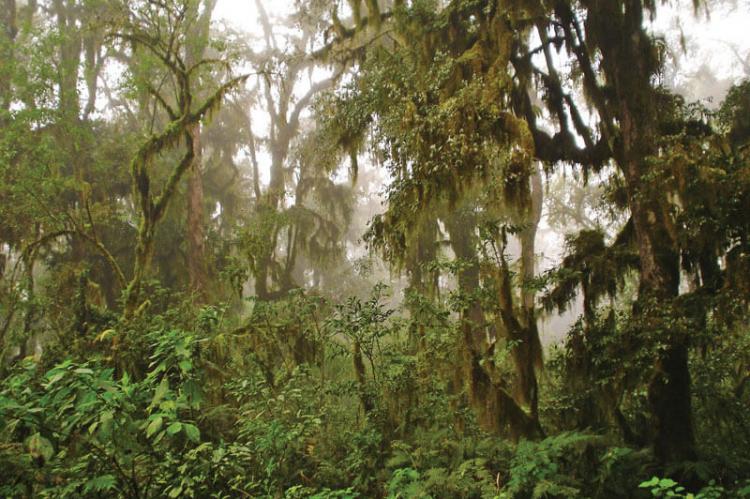Las Yungas Biosphere Reserve: Argentina's Andean Biodiversity Hotspot
The Las Yungas Biosphere Reserve is a diverse blend of high Andean mountain ecosystems and lush subtropical lowlands located in northwestern Argentina. This unique transitional zone between the Gran Chaco and Puna regions showcases rich biodiversity and cultural heritage.
Las Yungas Biosphere Reserve: Argentina's Andean Biodiversity Hotspot
Nestled in the northwestern provinces of Salta and Jujuy, Argentina, the Las Yungas Biosphere Reserve is a breathtaking embodiment of the region's rich biodiversity and cultural heritage. This vast protected area, situated within the southernmost part of the eastern mountainous forest of the Andean Range, encompasses a tapestry of landscapes that seamlessly blend the high Andean mountain ecosystems with the lush subtropical lowlands, creating a unique transitional zone between the drier Gran Chaco region and the arid, high-altitude Puna region.
A Mosaic of Ecosystems
From Cloud Forests to Agricultural Lands
The Las Yungas Biosphere Reserve is a true ecological marvel, encompassing diverse habitats and ecosystems. From the misty cloud forests and subtropical low mountain jungles to the montane forests and grasslands, the reserve showcases the incredible biodiversity of the Andean region. Additionally, the reserve includes extensive agricultural land dedicated to cultivating sugar cane, citrus fruits, soybeans, and cotton, reflecting the region's rich farming heritage.
Riparian Corridors and Natural Connections
One of the reserve's most striking features is the network of rivers that intersect the landscape, creating riparian forests on both margins. These natural corridors serve as vital ecological connections, facilitating the movement and migration of various species and contributing to the region's overall biodiversity.
Biodiversity Hotspot
Avian Wonders
The Las Yungas Biosphere Reserve is a true haven for birdwatchers and ornithologists. With over 203 bird species recorded within its boundaries, the reserve boasts an impressive avian diversity, including majestic raptors like the eagle (Spizaetus ornatus), the elusive la pava del monte (Penelope dabbenei), and the striking military macaw (Ara militaris).
Mammalian Marvels
The reserve's mammalian diversity is equally impressive, with 89 species reported. Among these, visitors may be fortunate to catch glimpses of the majestic jaguar (Pantera onca), the elusive tapir (Tapirus terrestris), and the agile ocelot (Leopardus pardalis), all of which call this protected area home.
Cultural Heritage and Sustainable Livelihoods
Indigenous Communities and Traditional Practices
The Las Yungas Biosphere Reserve is not only a haven for biodiversity but also a living testament to the rich cultural heritage of the region. Over 33,700 inhabitants (as of 2002) reside within the reserve's boundaries, primarily comprising farmers and descendants of the Kollas culture. Communities such as San Andres and Finca Santiago have maintained traditional subsistence agriculture practices, handicrafts, hunting, and timber extraction, reflecting the deep-rooted connection between the local people and the land.
Sustainable Economic Activities
The reserve supports traditional practices as well as more modern economic activities, such as extensive sugar cane farms and fruit industries. This harmonious coexistence of historical, social, and cultural practices in the region's highlands and lowlands exemplifies the delicate balance between conservation efforts and sustainable development.
The Las Yungas Biosphere Reserve is a true gem in Argentina's natural and cultural heritage, offering visitors a unique opportunity to immerse themselves in the Andean region's breathtaking landscapes, diverse wildlife, and rich cultural tapestry. This remarkable reserve ensures the preservation of its invaluable resources for future generations through responsible tourism, conservation initiatives, and sustainable development practices.
